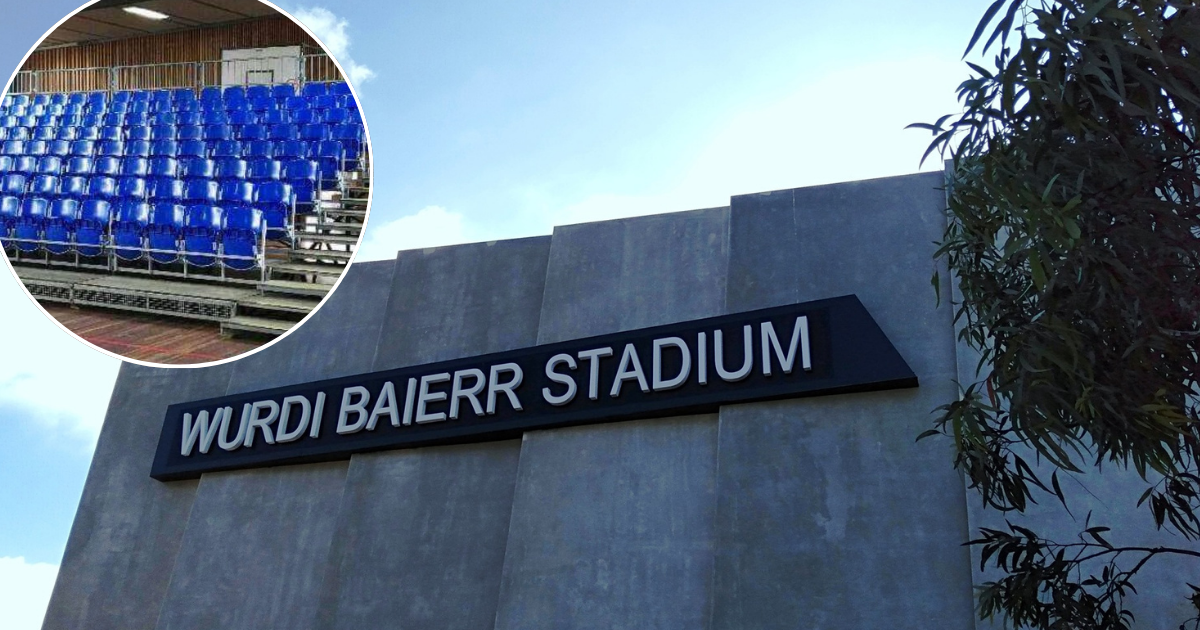Surf Coast community celebrates victory over seismic blasting

"We did it!" OCEAN campaign manager Mitch Pope, Corangamite MP Libby Coker, and Surfrider Foundation Surf Coast branch president John Foss celebrate. Photo: ANGUS SMITH
COMMUNITY members across the Surf Coast have celebrated their hard-won victory against seismic blasting in the Otway Basin after years of intense campaigning.
Speaking at a packed celebration at Patagonia’s Torquay store on Friday, Otway Climate Emergency Action Network (OCEAN) campaign manager Mitch Pope said: “I got the email on Thursday and thought ‘Did we just win this thing?'”

The announcement came in a brief email from global data company TGS, which stated, “With competing global priorities, TGS have decided not to proceed with the preparation of the Otway 3D Multi-client Marine Seismic Survey Environment Plan at this time. We have notified NOPSEMA of this decision, withdrawing the current Environment Plan from NOPSEMA assessment.”

Mr Pope thanked Surfrider, the Australian Marine Conservation Society, community members, and Corangamite MP Libby Coker, who he described as “instrumental” to the campaign’s success.
Coker had been a strong critic of the seismic blasting proposal and the community consultation process.
“Tonight is a fantastic celebration, and I’m pleased to be here with the community,” Ms Coker said.

Throughout the campaign, Coker was a vocal critic of the consultation process, pushing TGS to hold sessions in Torquay after community requests were ignored.
She also met with NOPSEMA’s CEO, demanding a halt to the project until proper consultation took place.
“The lack of consultation was deeply concerning, and it frustrated locals that their voices weren’t being heard,” Coker said. “As a local representative, it’s my job to make sure the community’s voice is heard.”

If approved, the blasting would have begun as early as this month and traversed marine parks and whale breeding grounds.
Yaraan Couzens Bundle, a Keerray Woorroong and Gunditjmara Whale Dreaming Custodian, told this masthead in May than many First Nations people had not even been aware of the proposal until local fishermen tipped off OCEAN, who then informed them.

The planned seismic blasting sparked uproar in two key federal electorates: Wannon, stretching from the Adelaide border to Anglesea, and Corangamite, which spans the Surf Coast and Bellarine.

Wannon federal member Dan Tehan, initially expressed trust in the regulator to do the right thing, but his concerns about the proposal deepened as the campaign progressed.
“TGS made a very sensible decision by withdrawing,” Mr Tehan said after the announcement.
“There was serious community concern about the scale of the project and how the consultation was handled.”

The plan, initially covering 77,000sqkm between the Otway coast and Tasmania, was eventually scaled back to 31,500sqkm following the government regulator NOPSEMA repeatedly sending the plans back for revision, and mounting public pressure.

Rallies up and down the coast, from Ocean Grove to Port Fairy, reflected the depth of public opposition.
As more people learned about the proposed project, the movement gained momentum, drawing increasing numbers of supporters.
A community protest held at Torquay’s Cosy Corner in May attracted thousands of participants, making it one of the largest paddle out events on record.

AMCS’s oil and gas campaign manager, Louise Morris, pointed to the overwhelming response from coastal communities.
“Thousands of people turned out to protest in coastal communities, and more than 30,000 people made submissions to NOPSEMA, with the vast majority opposing the project, including 20,000 AMCS supporters.”

“This is one of two seismic blasting proposals off the seas of south-east Australia, with another seismic data company, CGG, planning to blast in the Otway Basin along endangered southern right whale migration routes.”
Morris said companies use Special Prospecting Authority (SPA) permits, which bypass the more expensive and rigorous annual acreage release process.
Morris called for reform, urging the federal government to “abolish these reckless SPA permits to clean up the seismic blasting industry.”
In August, Ms Coker announced that the government was reassessing the existing rules and regulations relating to seismic surveying.

















